Chmod Example Directory

Learning The Shell Lesson 9 Permissions

How To Give Read Write Permissions To A Folder In Ubuntu Code Example

Unix Tutorial Five

Linux Permissions Guide Plex Support

How To Use The Chmod Command On Linux

Unix Permissions
$ chmod 755 -R directory_name $ chmod 755 -R /home/linuxtechi/data Example 3) Assign permissions using text notation.

Chmod example directory. You use the chmod command to set each of these permissions. For example, give read, write ( 4 + 2 = 6 ) to user and nothing ( 0 ) to group, and read ( 4 ) to others. This sets the permissions to.
In the next post we will see more about chmod options and examples such as change file/folder permissions recursively, SUID, SGID and Sticky bit. If you specify both the -h flag and the -R flag, the chmod command descends the specified directories recursively, and when a symbolic link is encountered, the mode of the file or directory pointed to by the link is not changed. If all your files and directories are under one parent directory then you can directly use chmod -R <dir_name> to assign the permission recursively.
Chmod changes the permissions of each given file according to mode, which can be either an octal number representing the bit pattern for the new permissions or a symbolic representation of changes to make, (+-= rwxXstugoa). For example, to create a directory that the accountants in a company can access, first make the group accounts by typing the following:. (or search for directories) (x), execute/search only if the file is a directory or already has execute permission for some user (X), set user or group ID on execution (s), restricted deletion flag or sticky bit (t).
The net is dangerous enough. For example, to explicitly make file3 readable and executable to everyone:. For example, to set the sticky bit, prefix a 1 to the number sequence:.
$ chmod 604 filename Umask 022 is Responsible for the default permission of a file. Examples chmod 644 file.htm. Chmod options-R – Recursively change the permissions in the file under the directory.
Sudo chmod 777 Directory /* We can see the following output which clearly reflects the change in file permissions:. In this section we will show you how to change permissions on directory and sub-directories with examples. Replace directory with the directory path that holds the files and subdirectories you want to configure.
7 Chmod Command Examples for Beginners 1. If you want to recursively the change the permission of all the files in a directory then you need to use -R option with chmod command. Chmod – change file mode bits.
$ chmod 644 filename. If you want to change all the permissions inside a directory, you can change them for every file by hand — which can take a very long time. Changing permission to a single set.
Chmod command Example 6:. Others can read only". Add write permission (w) to the Group's (g) access modes of a directory, allowing users in the same group to add files:.
Chmod +x myfile - Gives everyone execute permission on myfile. Changes the permissions of a list of files. Save yourself the effort with.
Chmod 1755 participants With a sticky bit, only the file owner, the directory owner, or the root superuser can delete the file, regardless of the file's read-and-write group permissions. Use chmod to set additional file system modes for files and directories. Group can read only;.
The mode can also be specified using the symbolic method:. Group members and other users can read and execute, but cannot write. + symbol means adding permission.
Chmod -cR g+w /path/to/directory. The first set three letters after the file type tell what the Owner of the file, have permissions to do. Rw-r--r-Using the – R switch.
Chmod +hrs sysfile sets the hidden, read-only, and system attributes for sysfile. Change into the directory with cd, before you run the find command. Perform chmod recursive with -R or --recursive.
Well organized and easy to understand Web building tutorials with lots of examples of how to use HTML, CSS, JavaScript, SQL, PHP, Python, Bootstrap, Java and XML. -type f -exec chmod 750 {} +. There are several ways to apply a chmod to files recursively on Linux.
Add single permission to a file/directory. Chmod a=rwx file turns on read, write, and execute permissions, and turns off the hidden, archive, and system attributes. To modify the permissions of each and every file and folder in a provided directory at once, use sudo chmod with -R:.
Chmod -R 755 myfiles. In assgn1_client.c, has owner’s permission as rw-, which means the owner mik can only read(r) and write(w) the file but cannot execute(x). User can read, write, and execute;.
Chmod ugo+x myfile - Same as the above command, but specifically specifies user, group and other. Groupadd accounts If you don't have the correct permission to create a group, use sudo to gain extra privileges or use the su command to switch to an account with valid permissions. To remove permission from any file/directory you have to use “–” Symbol.
For example, to change the permissions of all files and subdirectories under the /var/www/html directory to 755 you would use:. $ chmod 540 filename. Chmod -R 755 /var/www/html.
This next example will apply read/write permission to file for the owner. The chmod command is used to define or change permissioins or modes on files and limit access to only those who are allowed access… It changes the mode of each FILE to MODE…. The chmod command stands for change mode… and it’s used to limit access to resources….
I hope this article has helped you in applying the chmod command to a folder and all of its contents. Removing execute permissions to a user. You can combine multiple references and modes to set the desired access all at once.
Chmod permission directory name To change the permissions of a directory with its files and sub-directories recursively, we run:. In Linux, you will often need to make use of the chmod command. Examples Using chmod # Below are examples of making changes to permissions:.
Let’s give Read and Write permission to User/Owner using chmod command. The basic syntax includes using the find command to locate files/directories and then passing it on to chmod to set the permission:. Cd /var/www/mydirectory find.
In this method, the chmod command takes flags or symbols which represent the owner, group, others or all users ( u, g , and o) in the syntax. Instead of one or more of these letters, you can specify exactly one of the letters. For example, give read, execute ( 4 + 1 = 5 ) to user and read (4 ) to group, and nothing ( 0 ) to others.
D rwxrwxr-x Popular CHMOD Commands (TOP ) chmod 777. To set all permission bits on (anyone can read/write/execute):. $ chmod -R 0755 directoryNameHere However, if you need to apply conditional file permissions recursively, you need to use combination of the find and chmod command.
To remove write permission from orgcht:. Set the permissions of file.htm to "owner can read and write;. The first element of the list must be the numeric mode, which should probably be an octal number, and which definitely should not be a string of octal digits:.
It will report only on changes. In this example we have a directory called example which contains two files hello.rs and hello. This is equivalent to chmod 0777 aprsal:.
There's no way to set the permissions for files automatically in only this directory that are created after you set the permissions, but you could change your system-wide default file permissions with by setting umask 022. EXAMPLES chmod -w nowrite makes file nowrite read-only. # chmod LIST.
Add multiple permission to a file/directory. Chmod syntax for symbolic values chmod OPTION MODE1,MODE2 FILE. For example, consider the following example:.
To change the permissions of a directory, we run:. To see what permissions have been set on a file or directory, we can use ls. Here I have a file named file.txt.
Chmod u=rx file (Give the owner rx permissions, not w) chmod go-rwx file (Deny rwx permission for group, others) chmod g+w file (Give write permission to the group) chmod a+x file1 file2 (Give execute permission to everybody) chmod g+rx,o+x file (OK to combine like this with a comma). Chmod -R permission directory name For example, to set the permission to 755 recursively to /var/www/ diirectory execute the command. Sudo find directory -type d/f -exec chmod privilege {} \;.
By using this command, we can set the read, write, and execute permissions for all three of the permission groups (Owner, Group and Other) in Linux. Chmod u+x myfile - Gives the user execute permission on myfile.;. Now, suppose the task is to add execute permission for owner/user, remove write permission but add execute permission to group, and remove all permissions from others.
Use comma to separate the multiple permission sets as shown below. $ find /home/user/demo -type f -print. Current permission on these files can be checked by using ls -lrt example/ command as shown below.
The command chmod can be followed by the “options” element which allows further options of the chmod command to be defined.The element “mode” represents the so-called umask that is applied to the “file” (which can also be a directory).This mask contains the information responsible for determining whether or not a user class should receive new access rights or be removed of the. For a directory, the permissions govern who can cd into the directory and who can create, or modify files within the directory. Following are some examples:.
No such file or directory Please repeat Steps 1 and 4-5 above. The chmod command allows you to change the permissions on a file using either a symbolic or numeric mode or a reference file. Chmod stands for “Change Mode” and is used to modify the permissions of files and directories in a Linux based system.
Directory and files operations¶ shutil.copyfileobj (fsrc, fdst , length) ¶ Copy the contents of the file-like object fsrc to the file-like object fdst.The integer length, if given, is the buffer size.In particular, a negative length value means to copy the data without looping over the source data in chunks;. Changing permission for directory and subdirectory recursively in Unix This is the most frequently used example of a chmod command where we want to provide permission to any directory and all contents inside that directory including files and subdirectories. We will explain the modes in more detail later in this article.
Permission levels and types Each file and directory has three permission levels (user, group and other) and three types of permission (read, write and execute) in each level. You can use the numbers instead of the letters in chmod, like this:. Another way of assigning permissions is by using the text notation.
Chmod --changes|-c {--recursive|-R} {PATH}. Explore your self on how to use other options. This can be done as follows:.
After changing a directory's mode to 775 the folder's mode will be displayed in Unix style file lsting as:. The verbose option will cause chmod to report on the action. To Give permission to any file/directory you have to use “+” Symbol.
The command is relatively simple to use and involves using. After changing a directory's mode to 644 the folder's mode will be displayed in Unix style file lsting as:. To turn on read, write, and execute permissions, and turn off the set-user-ID bit, set-group-ID bit, and sticky bit attributes.
Arbitrary code from (sometimes) arbitrary fora pasted into arbitrary terminals, by a guy who wants to "chmod 707 -Rv ." except for two directories sourced from "some guy" with 2 posts?. To put it simply, use chmod command to change the file or directory permissions. From one to four octal digits Any omitted digits are assumed to be leading zeros.
Sudo chmod 644 filename-or-full-filepath. Learn how chmod command is used to manage Linux permission levels (user, group and other) and types (read, write and execute) step by step with practical examples. Chmod -v u+rw /path/to/file.
The all (a) mode is the same as ugo, allowing the previous command to be expressed as:. It’s a same as using your mouse to right-click a file or folder and selecting the permission tabs and. Chmod 755 -R /opt/lampp/htdocs will recursively set the permissions.
See also oct if all you have is a string. One of the easiest ways is to use the find command to select the files and then run the chmod command with the -exec switch. If a user is not specified, chmod will check the umask and the effect will be as if "a" was specified except bits that are set in the umask are not affected.
Following is a sample of ls -l command output. If for either of these tests, you get blank output, or a message similar to the following:. First column shows the chmod command , second column shows how the value is calculated for the permission.
Recursively (-R) Change the permissions of the directory myfiles, and all folders and files it contains, to mode 755:. Sudo chmod XXX -R directory-location You can also simply navigate to the folder (Using cd command) where you want to apply the permissions to all of the folder contents and run the following command. If you want to change the permissions of only files located inside specific directory then you will need to apply conditional file permissions recursively.
3 chmod examples Syntax and Options Related Commands. 0644 is okay, but "0644" is not. If you specify the -h flag, the chmod command prevents this mode change.
Returns the number of files successfully changed. By default the data is read in chunks to avoid uncontrolled memory consumption. In this example, you are setting permission to 0755:.
The syntax to modify the file and directory permission recursively:. The command can accept one or more files and/or directories separated by space as arguments. Examples of Using chmod command Assign permission to a File.
This next one will set the group’s write permission on directory and all its content recursively. To find all files in /home/user/demo directory, enter:. D rw-r--r-- Popular CHMOD Commands (TOP ) chmod 777.
Adding execute permissions to others.

Command Line I Can T Change Mode For Some Directories Using Chmod Ask Ubuntu

A Unix And Linux Permissions Primer Daniel Miessler
Q Tbn 3aand9gcs J72hjomdluhqe6xjivy M6yrjmkqx9x3z3ps Rpnb8by3w7z Usqp Cau

Unix Permissions The Easy Way Index Of All Chmod Permutations By Semi Koen Sep Towards Data Science

How To Set File Permissions In Mac Os X Macinstruct

Understanding Basic File Permissions And Ownership In Linux The Geek Diary
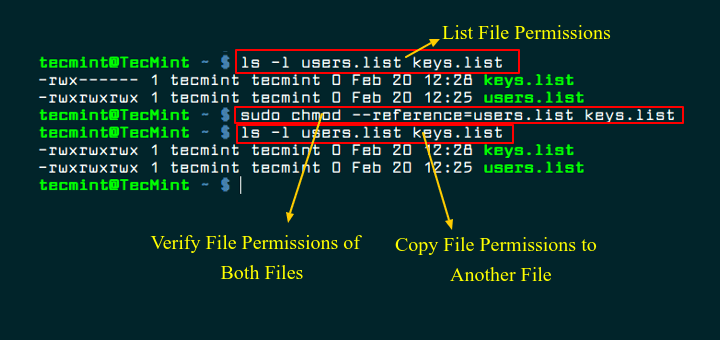
How To Copy File Permissions And Ownership To Another File In Linux

Chmod Command Understanding How To Grant File Permissions

File Permissions In Linux Unix Vk9 Security

Agenda The Linux File System Chapter 4 In Text Ppt Download

Change File And Folder Permission On Ubuntu Chmod Chown Command In Linux Youtube

Modify File Permissions With Chmod Linode

How To Use Chmod And Chown Command In Linux

Linux Chmod Command Linuxfordevices

Changing Permissions In Linux System Dev

Chmod Chown Wsl Improvements Windows Command Line

Chmod Jessica Peng

Perl Chmod Command How To Set And Remove File And Directory Permissions Udemy Blog
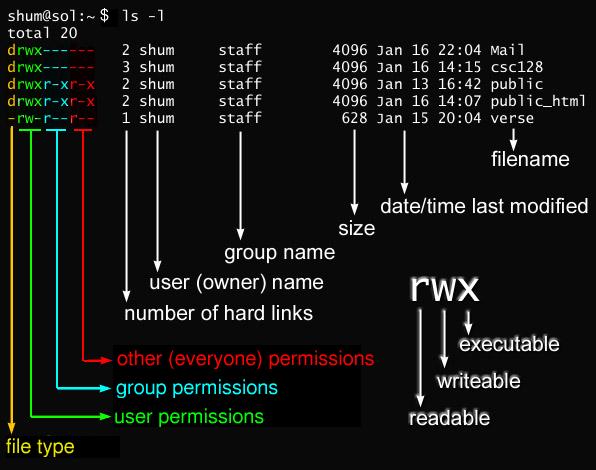
Javarevisited 10 Example Of Chmod Command In Unix Linux

How To Change Permissions Chmod Of A File Hostgator Support
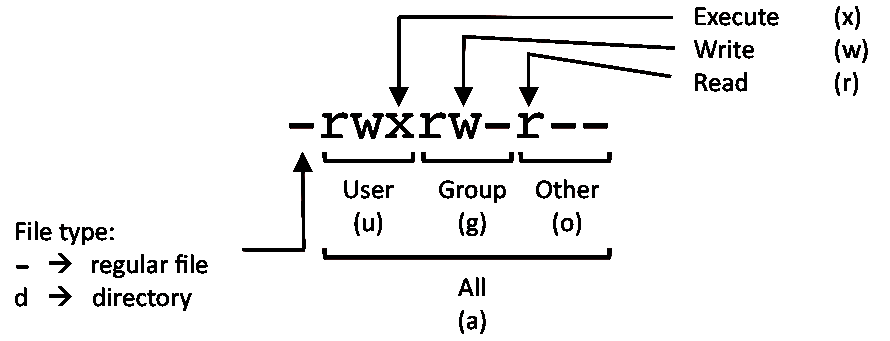
Linux Command Cheat Sheet

Understanding Linux Permissions And Chmod Usage

Change File Permissions Recursively Linux Linux Hint

Change Permissions Of Files And Folders In Filezilla In Your Linux Hosting

Linux File And Directory Permissions Explained

Ppt Agenda Powerpoint Presentation Free Download Id

How To Change Directory Permissions In Linux Pluralsight

What Did We Do When We Were Chmod 777 Develop Paper

How To Change File Permissions Recursively With Chmod In Linux

How To Use The Chmod Command On Linux
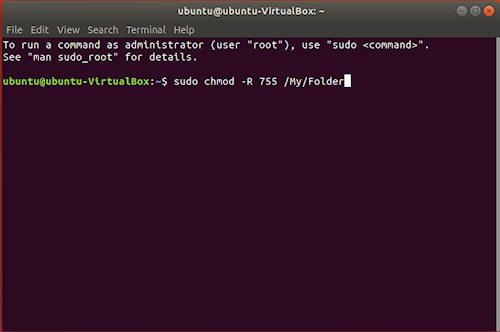
Introduction To Linux File Permissions Attributes Chmod Globo Tech

Unix Linux Os X File Permissions
:max_bytes(150000):strip_icc()/i7guGwCYcn-34e068e148ae4e918b29c86cd2d5740e.png)
Configuring Unix Linux File And Directory Access Rights

Understanding Linux Permissions And Chmod Usage

How To Copy File Permissions And Ownership To Another File In Linux

Chmod Recursive Change Permissions Recursively On Files Folders
Q Tbn 3aand9gcs Trmaopb41lzfo2wl Mi6olorurkywaddbudhnw Ne1mor3ct Usqp Cau

Chmod Wiki Ask Ubuntu

How To Use Chmod Command In Linux Explained With Examples

Linux Chmod Example Linux Hint

Permissions Why Use Chmod Instead Of Chmod U Rw Go R Unix Linux Stack Exchange

Linux Commands 5 File Permission Chmod Youtube

How To Use Chmod Command In Linux Explained With Examples

Chmod Wikipedia

Use Of Chmod Command In Linux Devopsdex

Understanding Linux File Permissions With Chmod Umask Chown And Chgrp Liquidon Net

What Is Chmod 777 How To Change File Permissions For Linux Tech Ninja Pro

How To Modify The File S And Directories Permission In Linux Vasanth Blog

Linux Cheat Sheet

9 Quick Chmod Command Examples In Linux

Chmod 777 What Does It Really Mean Make Tech Easier

Chmod Command In Linux With Examples Geeksforgeeks

Linux File Permissions Complete Guide Devconnected
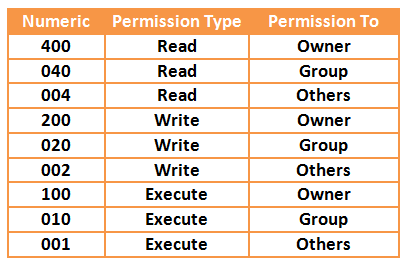
Your Own Linux Chmod Basics Of Files Directories Permissions And Use Of Chmod

Ownership And Permissions

Linux File Permissions Tutorial How To View And Change Permission

File And Directory Security Solaris Advanced User S Guide

Recommended File Permissions For Wordpress Asdqwe Dev
/GettyImages-1021092796-ea8c63ee76f84bd5bf98c4222337fbb4.jpg)
How To Use The Chmod Command In Linux

Basic Chmod Examples

Bif703 File Permissions Ppt Download
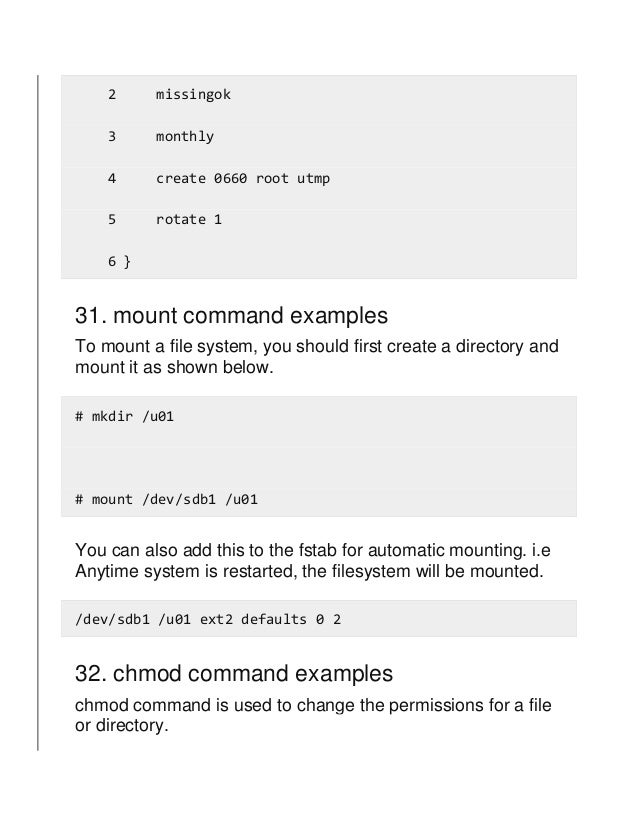
Give Write Access Chmod Unix

File Permissions In Linux Dzone Open Source

Changing File Permissions Wordpress Org
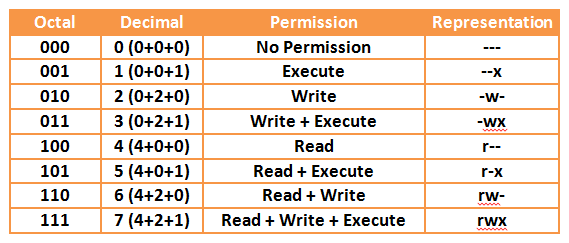
Your Own Linux Chmod Basics Of Files Directories Permissions And Use Of Chmod

Linux Users And Groups Linode

Chmod 755 Command What Does It Do Codefather
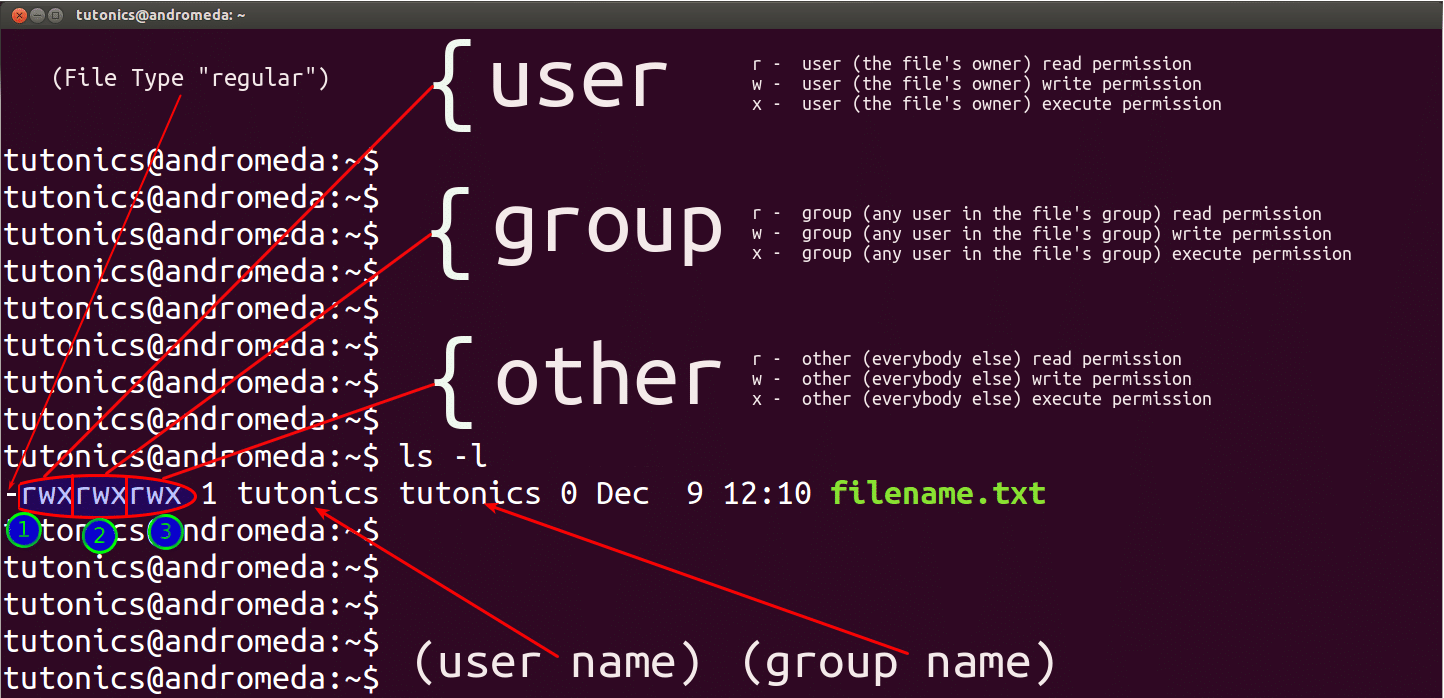
Linux File Permissions Tutorial For Beginners

8 Linux Chmod Command Examples To Understand It The Linux Juggernaut

Directory How Can I Change Permissions Of A Folder Including Its Enclosed Files And Subdirectories Ask Ubuntu

Chmod 777 755 655 644 And More Permissions Linux Files Tutorials

Chmod Recursive Change Permissions Recursively On Files Folders

Chmod 7777

Linux Permissions Guide Plex Support

Change Ftp Permissions With Filezilla On Windows Computer

Linux Chmod Command Tutorial With Examples To Change Permission Of Files And Folders Poftut

Chmod Command In Linux With Examples Geeksforgeeks

Chmod Cheatsheet Linux
Q Tbn 3aand9gcq1nsq3kxri7ryrifobs2rfobawbv4hezfw9 Ldf4feblahyn09 Usqp Cau

Freebsd Find The Chmod Numerical Value For A File Or Directory Nixcraft

9 Quick Chmod Command Examples In Linux
Your Own Linux Chmod Basics Of Files Directories Permissions And Use Of Chmod

Chmod Recursive Change Permissions Recursively On Files Folders

Linux Terminal File Permissions Chmod Chown And Chgrp Youtube

How To Change Directory Permissions In Linux Pluralsight

Chmod Umask Stat Fileperms And File Permissions

Workbook 4 File Ownerships And Permissions Ppt Video Online Download

Common Bash Commands
Q Tbn 3aand9gcs Trmaopb41lzfo2wl Mi6olorurkywaddbudhnw Ne1mor3ct Usqp Cau

Chmod Chown Wsl Improvements Windows Command Line

How To Set File Permissions In Mac Os X Macinstruct

Linux Chmod Command Linuxfordevices

Permissions In Linux Geeksforgeeks

Chmod 777 In Terminal The Command To Make All Changes Affect Every File And Folder Ask Ubuntu

Linux Chmod Command Help And Examples

How To Set File And Directory Permission In Linux Using Chmod Linux Syntax Settings

Linux File Permissions And Chmod Doug Vitale Tech Blog

Chmod How To Set File And Directory Permission In Linux Using Chmod Youtube



